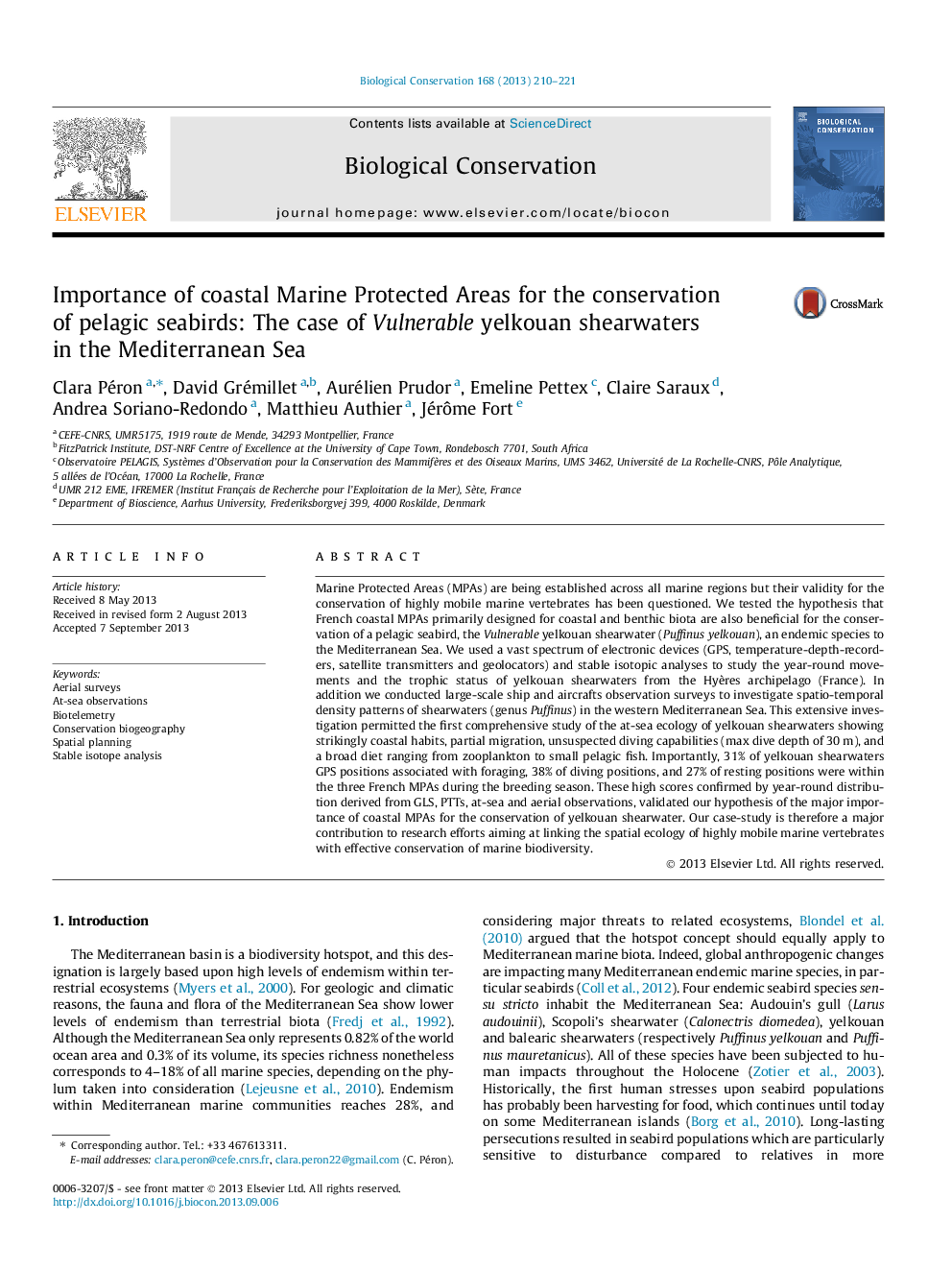| Article ID | Journal | Published Year | Pages | File Type |
|---|---|---|---|---|
| 6300363 | Biological Conservation | 2013 | 12 Pages |
Abstract
Marine Protected Areas (MPAs) are being established across all marine regions but their validity for the conservation of highly mobile marine vertebrates has been questioned. We tested the hypothesis that French coastal MPAs primarily designed for coastal and benthic biota are also beneficial for the conservation of a pelagic seabird, the Vulnerable yelkouan shearwater (Puffinus yelkouan), an endemic species to the Mediterranean Sea. We used a vast spectrum of electronic devices (GPS, temperature-depth-recorders, satellite transmitters and geolocators) and stable isotopic analyses to study the year-round movements and the trophic status of yelkouan shearwaters from the Hyères archipelago (France). In addition we conducted large-scale ship and aircrafts observation surveys to investigate spatio-temporal density patterns of shearwaters (genus Puffinus) in the western Mediterranean Sea. This extensive investigation permitted the first comprehensive study of the at-sea ecology of yelkouan shearwaters showing strikingly coastal habits, partial migration, unsuspected diving capabilities (max dive depth of 30 m), and a broad diet ranging from zooplankton to small pelagic fish. Importantly, 31% of yelkouan shearwaters GPS positions associated with foraging, 38% of diving positions, and 27% of resting positions were within the three French MPAs during the breeding season. These high scores confirmed by year-round distribution derived from GLS, PTTs, at-sea and aerial observations, validated our hypothesis of the major importance of coastal MPAs for the conservation of yelkouan shearwater. Our case-study is therefore a major contribution to research efforts aiming at linking the spatial ecology of highly mobile marine vertebrates with effective conservation of marine biodiversity.
Related Topics
Life Sciences
Agricultural and Biological Sciences
Ecology, Evolution, Behavior and Systematics
Authors
Clara Péron, David Grémillet, Aurélien Prudor, Emeline Pettex, Claire Saraux, Andrea Soriano-Redondo, Matthieu Authier, Jérôme Fort,
